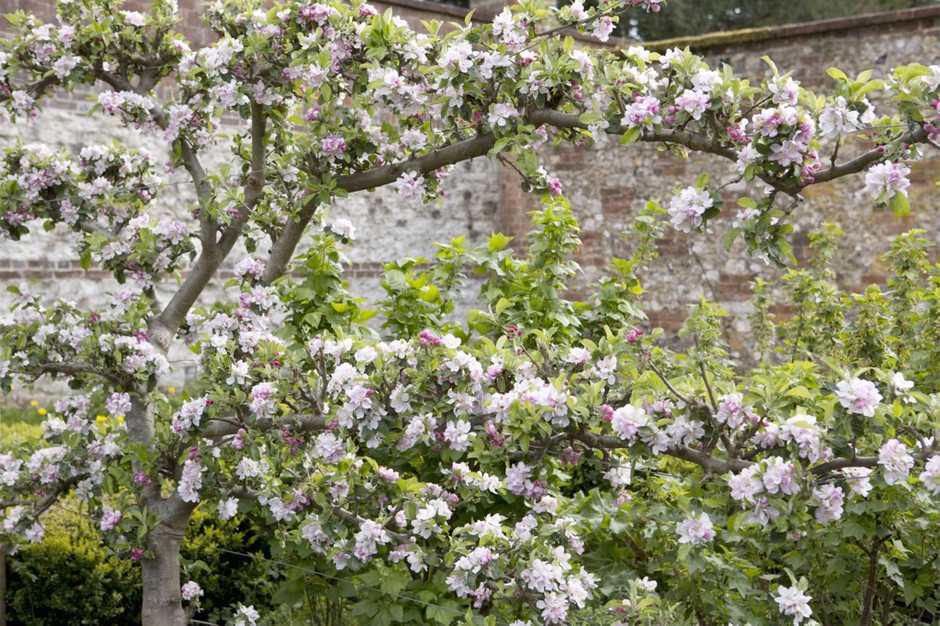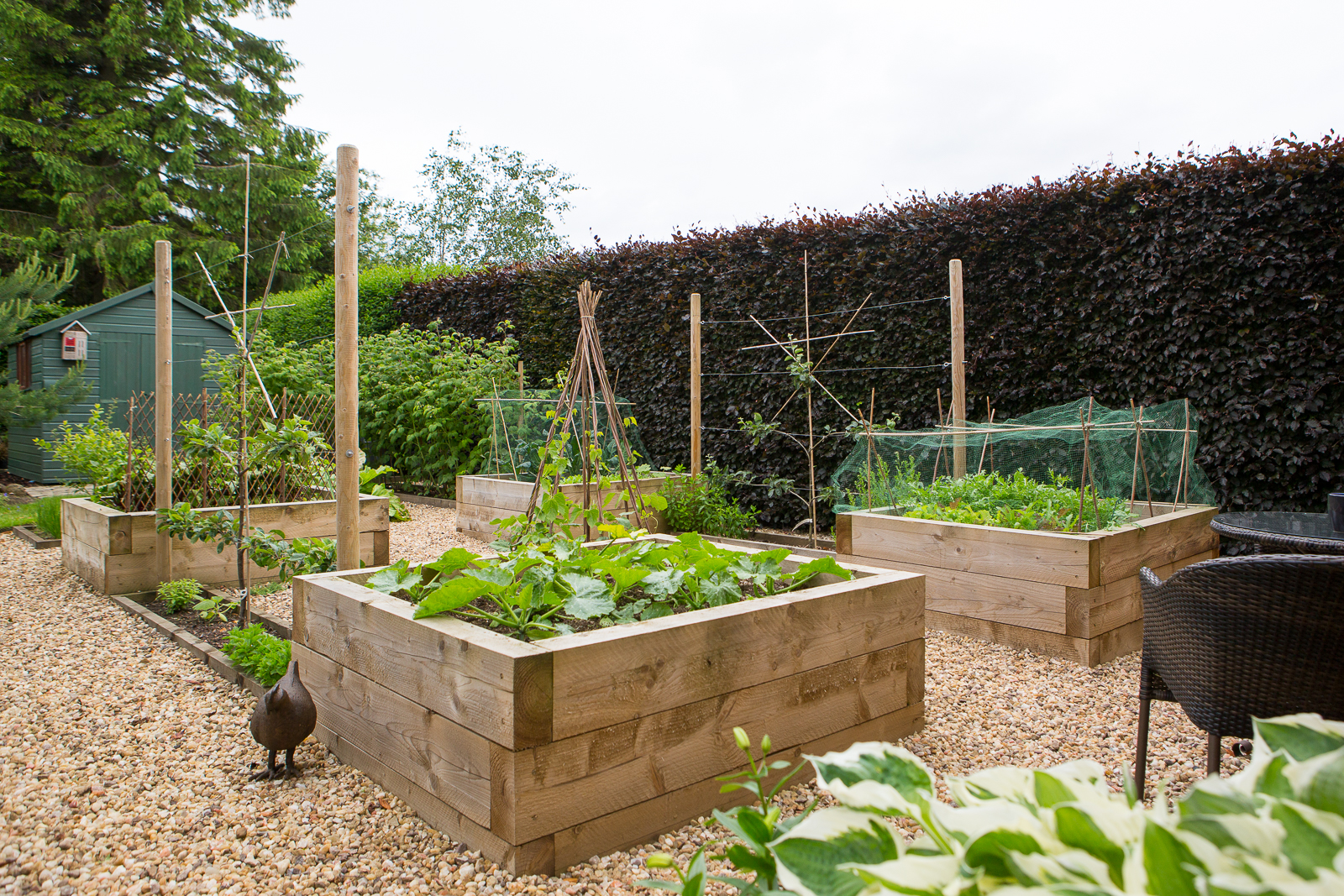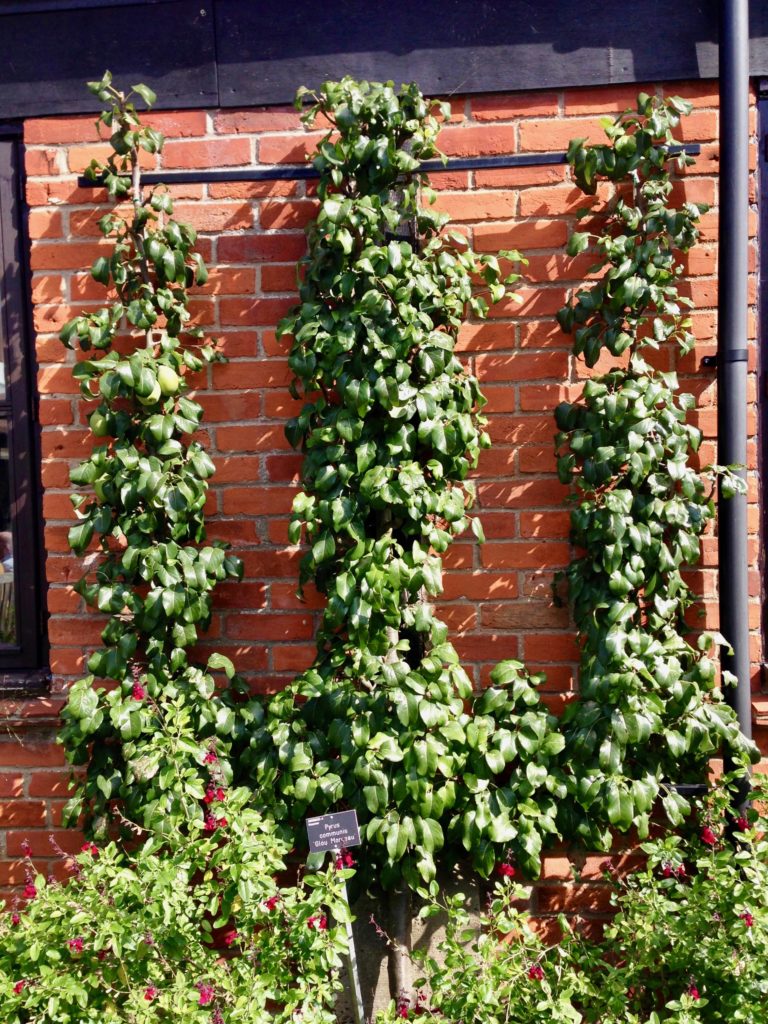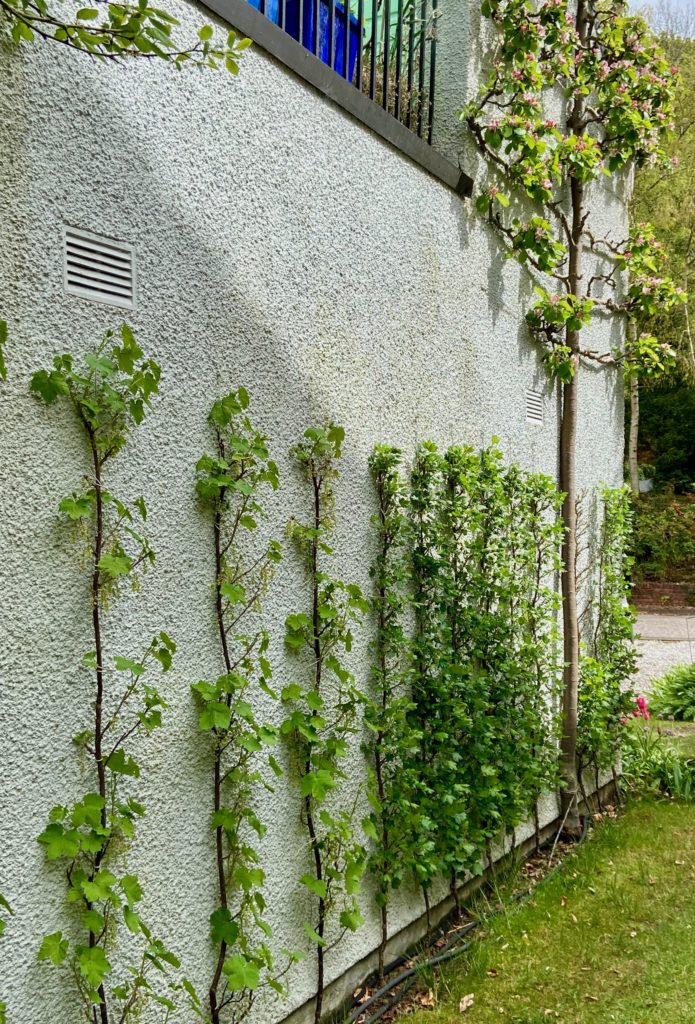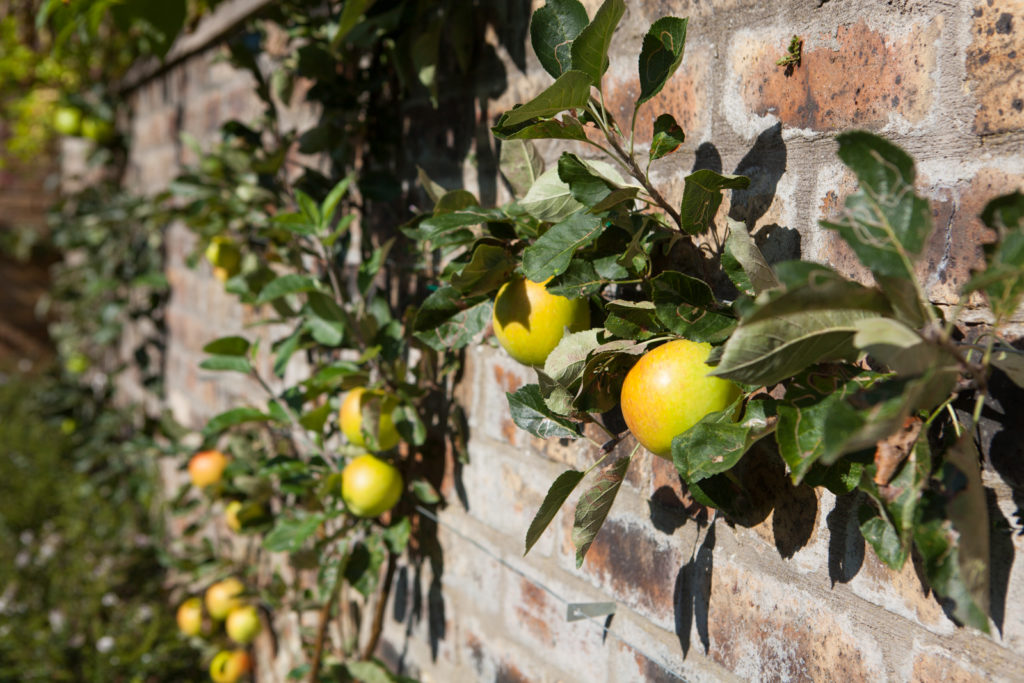Trained Fruit as a screen in a garden. Image courtesy of Gardeners’ World.
Imagine wandering through your own orchard, enjoying spring blossom and the buzz of bees, the laughter of children playing amongst the trees, picking ripe fruit in the autumn. Lovely as it sounds, most of us have much smaller gardens, but you can work them hard and use trained fruit as a design tool in garden planning. Training fruit trees is a space saving way of growing fruit on a wall, fence, screen, even as stepover hedges. They require little pruning once established and are attractive in spring blossom and fruit and provide architectural interest all year round.
Trained Fruit as a design tool
I use trained fruit a lot as a design tool, often because there are sunny walls and fences to cover, and people enjoy growing their own fruit, as my parents did, but I also use it to create ‘rooms’ within gardens with screens of trained fruit, potager gardens, and creating interesting forms.
Wooden uprights and wiring awaiting the arrival of trained espalier fruit trees.
Design by Polley Garden Design
In the picture above, the client wanted a ‘soft boundary feel’ giving veiled but not total privacy. The wooden uprights and wires await the arrival of trained espalier fruit trees, which will be planted against the wires and the branches tied in. In the picture below, this potager garden uses the same idea to define the space within the wider garden.
Potager Garden. Design by Polley Garden Design
See more of this garden design >>
Trained fruit is an ideal solution for small gardens
Not only can the form you choose to train your fruit into add structural interest, but also if space is at a premium, you can use ‘cordons’, (a tree trained into a single stem, upright or at 45 degrees). See a picture below of a trained pear at RHS Garden Hyde Hall, making the most of a small area of sunny wall.
Trained pear tree at RHS Garden Hyde Hall.
At a recent visit to a garden open under Scotland’s Gardens Scheme, on the side wall of the house by a boundary was a wonderful example of making the most of your garden space. A mix of espalier and cordon trained apples, gooseberries and red currents – all looking very healthy and adding form and interest.
Great use of wall space using trained fruit. Image by permission of the house owner.
Even in a very small space, try a stepover fruit hedge (for apple or pear trees, trained into horizontal stems 30cm high). You can buy them ready trained, or do it yourself.
Stepover Apple Hedge. Image courtesy of Gardeners’ World.
Trained fruit can even work in semi shade
Don’t despair if your garden is not very sunny. Most fruit does prefer a sunny site, but if your garden is in semi-shade, you can still use trained fruit as a garden design tool, grow apples, blueberries, blackberries, raspberries, red currants, gooseberries and rhubarb. So, if you are thinking of adding fruit to your garden don’t just think the practicalities, but also how to use it to add design interest to your garden.
Trained espalier apple trees on boundary wall.
See more of this garden design >>

